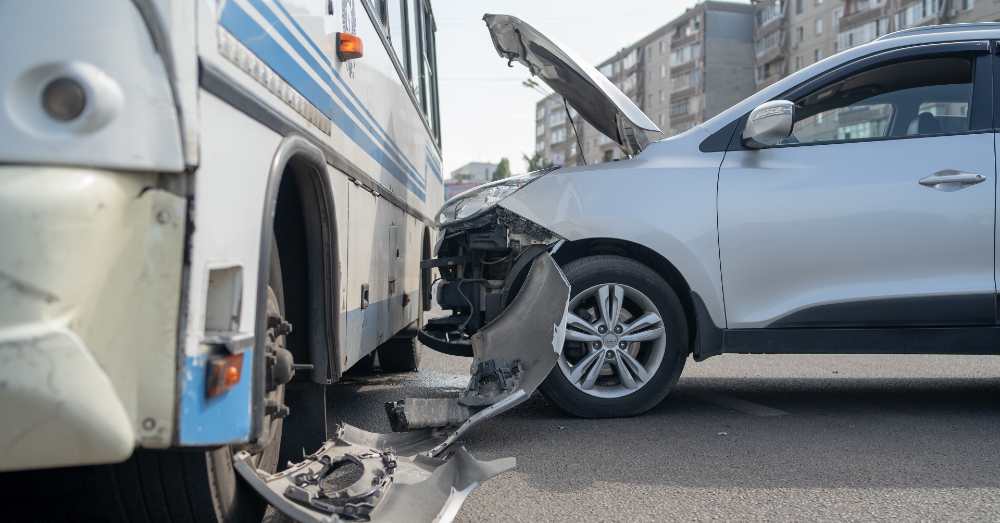
Heavy Duty Road Safety: NHTSA’s New Automatic Braking Rule for Buses & Trucks
What should the government be concerned about? In the automotive industry, safety on the road should be a top concern for the NHTSA.
Over the next five years, the NHTSA will require automatic emergency braking in vehicles that haven’t added it yet. Most of us are familiar with buses and heavy trucks. In most cases, we might assume these vehicles haven’t changed or been upgraded much over the past several years. That said, adding safety to the mix can make a huge difference. Future models of these heavy vehicles will include automatic emergency braking, making them much safer on the road.
The NHTSA is all about safety
The initials stand for National Highway Traffic Safety Administration, which tells you enough to know that the organization is entirely concerned with the safety of drivers, passengers, and surroundings on the roads in the United States. When you hear about a safety recall, many times its come from this organization that either suggests or requires an automaker to issue a recall due to safety malfunctions in various vehicles. Most recently, Honda issued a recall of 1.2 million vehicles for rear camera issues. This came with some push from this government organization.
Adding safety to larger vehicles is the next logical step
Last month the NHTSA announced that all new passenger cars and light trucks must include automatic emergency braking, and the next logical step is to move this requirement upmarket to larger vehicles. It takes buses and large trucks much longer to stop than regular passenger vehicles. Drivers can certainly use any help they can get in the form of advanced safety systems. Although we hope that professional drivers in buses and large trucks are less distracted than other drivers, there’s no guarantee of that. It’s also extremely difficult for drivers to see everything going on around the vehicle.
Will added safety systems save lives?
Requiring vehicles to include more safety features should prevent crashes and save lives. In fact, the NHTSA calculates adding this safety feature could prevent nearly 20,000 crashes and save up to 155 lives each year. Automatic emergency braking can reduce the frequency and severity of rear-end crashes while also reducing the number of rollovers and accidents that involve drivers losing control while on the road. Could this one safety system have such an impact on large vehicles that we see more advanced safety features added in the future?
Prevention leads to cure
The old saying, “one ounce of prevention is with a pound of cure” is an indication that if we take steps to avoid bad things happening to us, we don’t have to face the need to cure the ailment in the future. Adding advanced driver assistance features that prevent accidents means fewer collisions, less costly accidents, and lives saved. This new rule applies to new trucks and buses weighing at least 10,000 pounds and should be approved sometime next year. The heaviest of these trucks, which topple the scales at more than 26,000 pounds, will require the installation of this braking system three years after the approval. All other vehicles will have until 2028 to comply.
Is this new safety step being met with pushback?
In many cases, when new regulations and requirements are proposed, there’s pushback from somewhere in the industry. In this case, there isn’t any objection to making these heavy vehicles safer. The American Trucking Association welcomes the announcement and supports using this safety technology to make vehicles safer on the road. The NHTSA requiring this new safety feature is appropriate and timely, and it will certainly reduce the number of accidents on the road every year.
How many accidents could be prevented with AEB?
According to statistics, of the 60,000 rear-end crashes each year, more than 19,000 of them are preventable by utilizing this technology. This will also save up to 155 lives and prevent nearly 9,000 injuries every year. As you can also guess, the cost of repairs associated with these crashes will also be reduced dramatically. Crashes involving buses and heavy trucks can be some of the most expensive and deadly on the road. If adding automatic emergency braking can prevent crashes, it’s certainly worth adding it to future vehicles.
The NHTSA rule to add safety to new passenger vehicles and light trucks should also save at least 360 lives and reduce the number of injuries by 24,000 per year. This is the first step in ensuring safer vehicles and helping to prevent more crashes on the road, which could reduce the overall cost of vehicle repairs every year.
This post may contain affiliate links. Meaning a commission is given should you decide to make a purchase through these links, at no cost to you. All products shown are researched and tested to give an accurate review for you.



